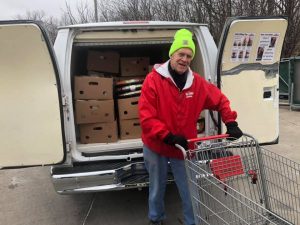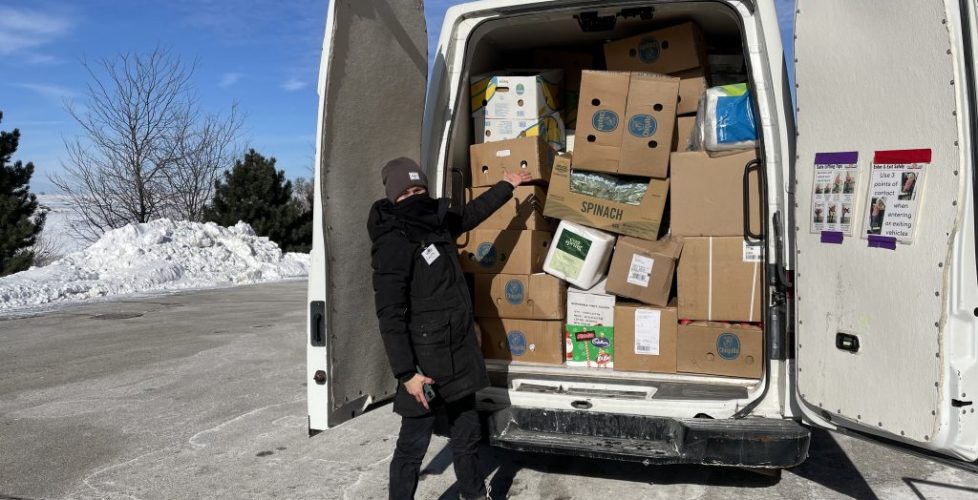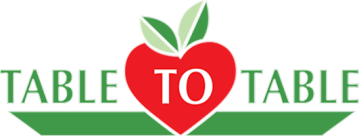Route-based food rescue: “It’s a big puzzle.”
Table to Table’s route-based food rescue is a unique model that matches food donations directly to recipients during each three-hour route. In traditional models, the food is brought back to a warehouse where recipient partners place an order and pick it up later in the week. Or these partners pick up food donations directly from a store, using their own resources, and all donations from a store go to a single recipient agency. Sometimes it’s not enough food and sometimes it’s more of one item than a single agency is able to use.
Route-based rescue matches the right amount of food to the right partners immediately. The benefits of this model are many; it reduces waste by getting food to tables more quickly, allows partners to choose what fits their needs, and increases variety for the entire system. Food rescue efforts in similarly-sized communities using other models are usually unable to reach the efficiency or food donation totals that we experience here in Johnson County. Our daily delivery schedule increases food donations and allows recipient agencies to refill their limited storage repeatedly during the week.
In our early years, consolidating local food rescue to Table to Table wasn’t easy. “It took convincing,” says David Wellendorf, T2T Volunteer & Transportation Manager from 2002-2017. “You needed to convince the donor and recipient that this will work while looking at your logistic means to make sure you don’t oversell your ability…It’s a big puzzle.”
We asked David, how did you do it, in the beginning?
“Tenaciousness.” That’s how it happened, he says. “And we loved it.”
David, what kept you engaged and loving the work?
“The volunteers—Are you kidding? The passion of each person coming in and saying, ‘I want to make a difference.”

The volunteer route-based model is essential to food rescue success. This year, volunteers provided over 20,000 hours of service at Table to Table.
Developing and maintaining a stable workforce of volunteers is critical to the success of the T2T operation.
As David says of those early years, “Logistically we could’ve set the world on fire, but our logistical abilities outpaced the money we could bring in.” Volunteers were critical, but by 2016 not having enough staff or space to manage those complicated logistics was holding the organization back. That year, T2T recovered nearly two million pounds of food with three staff in a 700-sq. ft. basement office — a truly remarkable feat, but unsustainable.
Fortunately, T2T had proven that this crazy idea could work, and with the support of our community grew our resources to make large scale food rescue sustainable. In 2002, T2T was running two routes each day. Now, we run about 45 routes a week. How? With the same community dedication and partnerships that launched Table to Table 25 years ago–only now with six staff, 100+ food donor partners, 50 recipient partners, and 150+ regular volunteers.


